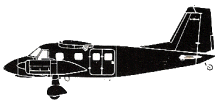Incident Overview

Description
A Cessna Citation XLS+ was damaged beyond repair when it collided with aerials short of runway 10R at Aarhus Airport. The eleven occupants were not injured. The aircraft was hired for the manager and tour members of pop star P!nk for a flight from Oslo, Norway, to Aarhus, Denmark. The flight was uneventful until the landing phase. At 00:09 local time, the first officer established radio contact with Aarhus Tower and received information that included an expected landing on runway 10R, wind from 140ø at 2 knots and a visibility of 250 meters and a Runway Visual Range (RVR) of 900 m, 750 m, and 400 m in fog patches. The commander made an approach briefing for the ILS to runway 10R. At 00:20, after contacting Aarhus Approach, the flight was cleared to descend to 3000 feet. The controller subsequently issued further course and descent instructions. Due the weather conditions, the air traffic controller planned to set up the aircraft on a long final allowing the flight crew to be properly established before the final approach. At 00:31, the air traffic controller instructed the flight crew to turn left on heading 130ø and cleared the flight crew to perform an ILS approach to runway 10R. When established on the localizer for runway 10R and shortly before leaving 2000 ft on the glide path, the commander through shallow fog obtained visual contact with the runway. The aircraft was configured for landing and became established on the glide slope. The flight was then cleared to land. Prior to reaching an altitude of 500 feet, the aircraft began to descend below the glide slope. When the EGPWS began to sound, warning the crew of their descent below the glide slope, the first officer asked the captain whether to cancel the EGPWS warnings. The captain confirmed. The descent was continued. Approximately 450 m before the beginning of runway 10R the aircraft collided with the antenna mast system of the localizer for runway 28L, which ruptured the left wing fuel tank. After a landing roll of approximately 60 meters, the nose landing gear collided with the near field antenna of the localizer for runway 28L and collapsed. While rolling on the main wheels and skidding on the nose section, the aircraft entered the stopway for runway 28L .The aircraft came to a full stop approximately 230 m after the beginning of runway 10R. Leaking fuel ignited and caught fire on the aft left-hand side of the fuselage. Factors 1. Deviations from SOP in dark night and low visibility combined with the cancellation of a hardware safety barrier compromised flight safety. 2. The commander started flying below the GS. 3. Both pilots accepted and instituted a deactivation of a hardware safety barrier by cancelling potential EGPWS GS alerts for excessive GS deviations. 4. Both pilots accepted and instituted a deviation from SOP by not maintaining the GS upon runway visual references in sight. 5. At low altitude, the first officer made no corrective call-outs on altitude, GS deviation or unstabilized approach. 6. The confusion over and misinterpretation of the CAT 1 approach and runway lighting system resulted in a too early flare and consequently a CFIT.
Source of Information
https://www.thelocal.dk/20190806/pinks-tour-jet-bursts-into-flames-in-denmarkhttps://www.thelocal.dk/20190806/pinks-tour-jet-bursts-into-flames-in-denmarkPrimary Cause
Weather conditions, specifically obscured visibility and a combination of low visibility, wind, and fog, combined with the commander’s actions, created a hazardous environment. The failure to properly implement safety procedures, including the use of the GS and EGPWS, and the lack of a robust hazard assessment, significantly increased the risk of a catastrophic event.Weather conditions, specifically obscured visibility and a combination of low visibility, wind, and fog, combined with the commander’s actions, created a hazardous environment. The failure to properly implement safety procedures, including the use of the GS and EGPWS, and the lack of a robust hazard assessment, significantly increased the risk of a catastrophic event.Share on:





